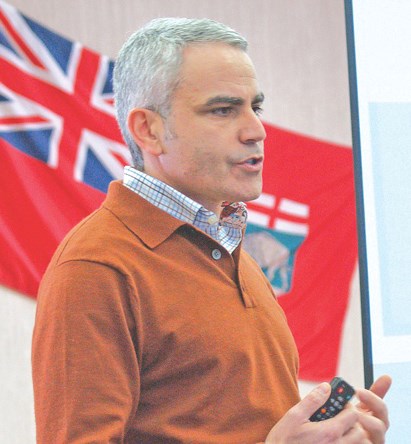If they ever write a book about the long and winding history of Hudbay, David Garofalo is sure to garner a chapter or two.
His tenure as president and CEO brought a mix of mines, acclaim and controversy to the mid-tier miner borne out of the now-defunct HBM&S.
Now after five-and-a-half years at the Hudbay helm, Garofalo is embarking on a fresh challenge effective Jan. 1. Alan Hair, Hudbay’s chief financial officer, will take his place.
“It’s certainly not anything to do with Hudbay’s business,” says Garofalo, 50, who leaves to become CEO of Vancouver-based Goldcorp. “All of our four mines are actually operating exceptionally well and we’re actually likely to have the best quarter of our modern history in terms of earnings and cash flow.”
That Garofalo would choose to leave Hudbay on a high note is no coincidence for a chief executive regarded for his prudence and patience.
When he assumed the reins of Hudbay on July 12, 2010, the company was widely viewed as takeover fodder, its future significance in doubt.
At the time, Hudbay’s operating assets consisted of one major mine (777 in Flin Flon) and two fast-depleting mines (Trout Lake near Flin Flon and Chisel North in Snow Lake).
From an investor standpoint, the company was undiversified, its ability to weather cyclical storms uncertain. (The previous year, Hudbay had temporarily suspended its Snow Lake operations due to weak metal prices).
And now? According to the Globe and Mail, 16 of 19 analysts who follow Hudbay recommend investors buy the company’s stock.
Garofalo cites his biggest accomplishment – and he points out it’s a collective one – as opening three new mines in Lalor and Reed in northern Manitoba and Constancia in Peru.
“We upgraded the quality of our portfolio through building bulk tonnage operations like Constancia and Lalor, which positions us for difficult metal price periods like we’re experiencing now,” he says. “We’re much better equipped to handle ourselves in these low points in the cycle than we were back five years ago, and now with [the proposed] Rosemont [mine in Arizona], we have three 20-year deposits between Lalor, Constancia and Rosemont, which puts us very high up in terms of the quality scale of the organization.”
Garofalo’s biggest challenge? The flip side of the same coin.
“Building three mines at once, investing and risking $2.5 billion in capital to do that, is extremely challenging,” he says, “and there’s lot of things that go on underneath the hood that the market doesn’t see to deliver those.”
Another triumph for the silver-haired chief executive came in 2012 when the Northern Miner, the New York Times of the mineral sector, named him Mining Person of the Year.
The Northern Miner praised Garofalo’s “steady hand” in “making Hudbay a standout success story amid the dwindling list of mid-tier base metal miners.”
But his tenure was not without tense moments.
In 2013, Hudbay faced vocal protests from Pukatawagan’s Mathias Colomb Cree Nation, which claimed the company was operating on traditional band territory without authority.
Earlier this year, an American filmmaker painted an unfavourable, if not skewed, view of Garofalo and the company in a documentary called
Flin Flon Flim Flam. (Hudbay dismissed the film, which was funded by opponents of the company’s planned Rosemont Mine).
Until recently, Garofalo had hoped to be with Hudbay for another five years before seeking out new opportunities.
Then a couple of long-time friends, board members with Goldcorp, asked if he’d be interested in taking over for that company’s retiring CEO, Chuck Jeannes.
Garofalo deemed the chance to lead Goldcorp – the largest mining company in Canada and the biggest gold company in the world – as too good to pass up.
“I felt that I clicked strategically and philosophically with all of the board members that I met, and thought it would be a good fit culturally for me,” he says.
At the same time, Garofalo felt a duty to leave Hudbay in “strong hands.” He believes that’s just what the company is getting in Alan Hair.
“Alan was always very high on the list of potential successors with 20 years with Hudbay, 30 years in the mining industry and [he] really came up the ranks at Hudbay right from Flin Flon up to the executive suite,” says Garofalo. “[He] was instrumental in the success of our strategy of the last five years. He’s been the guy in charge of building the three mines we did and delivering them on time and on budget, so he’s going to be an exceptional CEO. He’s mentored me as much as I’ve mentored him, quite frankly.”
As he prepares to depart Hudbay, Garofalo can’t help but reflect on how northern Manitobans, in their typical fashion, “treated me like family.”
“My wife’s had some significant health challenges over the last year,” he says. “She’s battling cancer and I have to say that a lot of people within the Hudbay community in northern Manitoba reached out to me and my wife and provided a lot of emotional, moral support and prayers, and for that I’m forever indebted. And of course I’m forever indebted for the opportunity that’s been afforded me running a company with such a long and proud history.”




